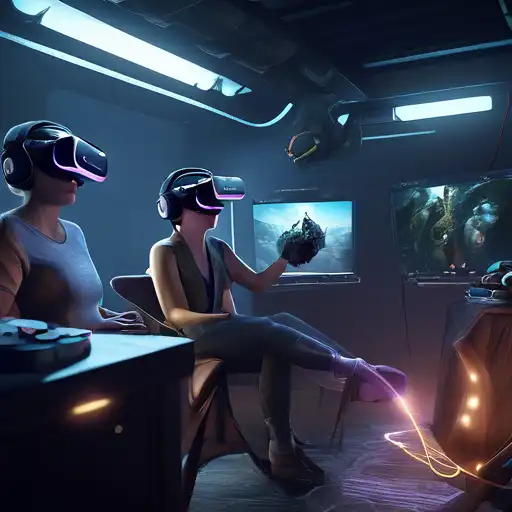Introduction to Virtual Reality
Virtual Reality (VR) has transformed the way we interact with digital content, offering immersive experiences that were once the stuff of science fiction. This guide will walk you through the essentials of creating captivating VR experiences that engage and astonish users.
Understanding VR Technology
Before diving into creation, it's crucial to understand the technology behind VR. VR headsets, motion tracking, and 3D audio are just the tip of the iceberg. Each component plays a vital role in crafting an immersive environment.
Key Components of VR
- Head-Mounted Displays (HMDs)
- Motion Tracking Sensors
- 3D Audio Systems
- Interactive Controllers
Designing for Immersion
Creating an immersive VR experience goes beyond technical specs. It's about designing worlds that feel real and interactions that feel natural. Here are some tips to achieve that:
- Focus on user comfort to prevent motion sickness.
- Use spatial audio to enhance realism.
- Implement intuitive controls for seamless interaction.
Developing VR Content
With the right tools and software, developing VR content has become more accessible. Platforms like Unity and Unreal Engine offer robust environments for VR development, complete with assets and tutorials to get you started.
Popular VR Development Tools
- Unity
- Unreal Engine
- Blender for 3D modeling
- A-Frame for web-based VR
Optimizing for Performance
VR applications demand high performance to maintain immersion. Optimizing your VR experience involves balancing visual fidelity with smooth performance. Techniques like level of detail (LOD) and efficient lighting can make a significant difference.
Testing and Feedback
Testing is a critical phase in VR development. Gathering user feedback can help identify issues with immersion, comfort, and interactivity. Iterative testing ensures your VR experience meets user expectations.
Future of VR
The future of VR is bright, with advancements in haptic feedback, eye-tracking, and wireless technology pushing the boundaries of what's possible. Staying updated with these trends is essential for anyone looking to create cutting-edge VR experiences.
Conclusion
Creating immersive VR experiences is a multifaceted process that combines technology, design, and user feedback. By following this guide, you're well on your way to mastering the art of virtual reality and creating experiences that captivate and engage.
For more insights into VR technology, check out our VR Technology Trends article.
